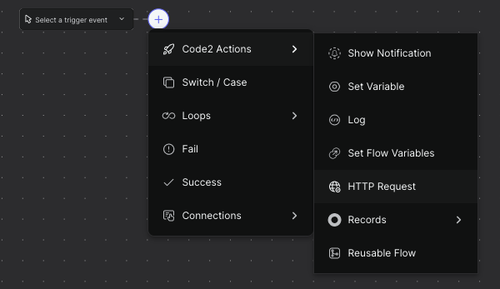Learn about frontend and backend nodes in Peaka and how they differ
This article provides an overview of frontend, backend, and common nodes in Peaka and explains their respective roles.

Frontend nodes, including 'Set App Variable,' 'Set Page Variable,' and 'Show Notification,' operate within the user's web browser. They are responsible for handling tasks related to the graphical user interface, such as displaying information and facilitating user interactions.
You can incorporate frontend nodes into your flows without any restrictions. There is no steps credit limit for using frontend nodes.
Backend nodes, which encompass 'Connections,' 'Records,' 'HTTP Request,' 'Log,' and 'Set Flow Variables,' operate on the server-side or backend of your application. They handle data processing, communication with external services, and other backend operations.
The usage of backend nodes is subject to your steps credit limit, determined by your subscription package.
Common nodes, such as 'Switch / Case,' 'Loops,' 'Fail,' and 'Success,' can function as either frontend or backend nodes, depending on your flow's requirements and configuration.
If you choose to use a common node as a backend node, it will count towards your steps credit usage.
It's essential to use nodes judiciously to manage your steps credits efficiently and minimize the completion time of your flows. Since flows execute sequentially, the order of node placement within your flow is crucial for achieving the desired outcomes effectively.
Understanding the distinctions between frontend and backend nodes is vital for optimizing your Peaka workflows and ensuring the smooth operation of your applications.